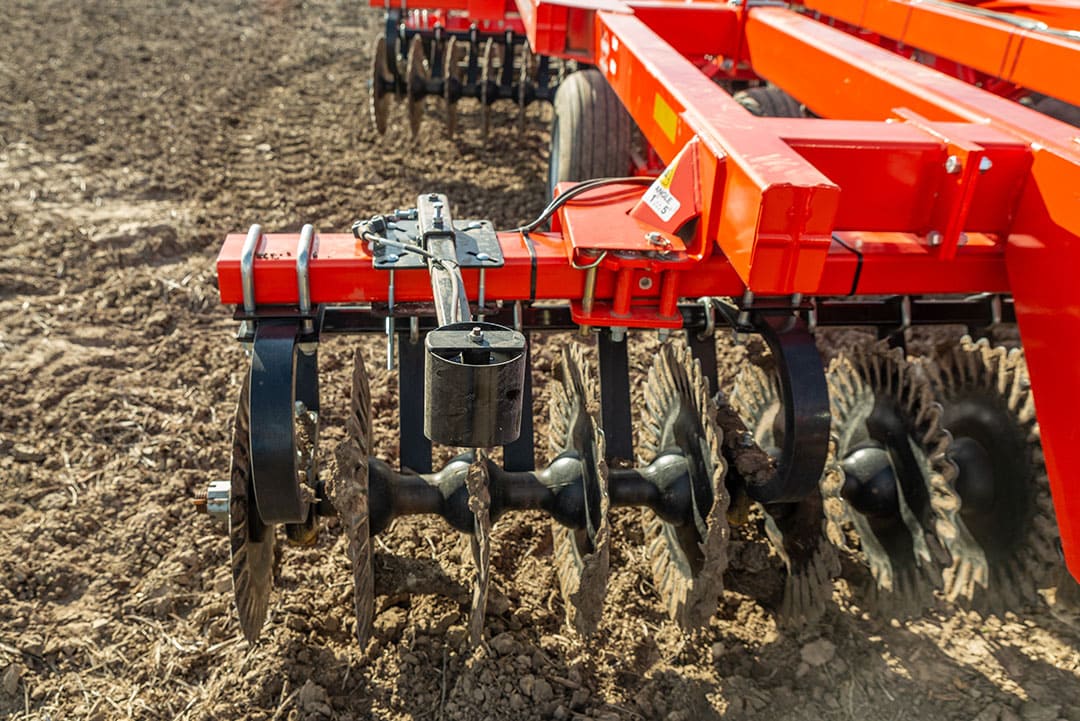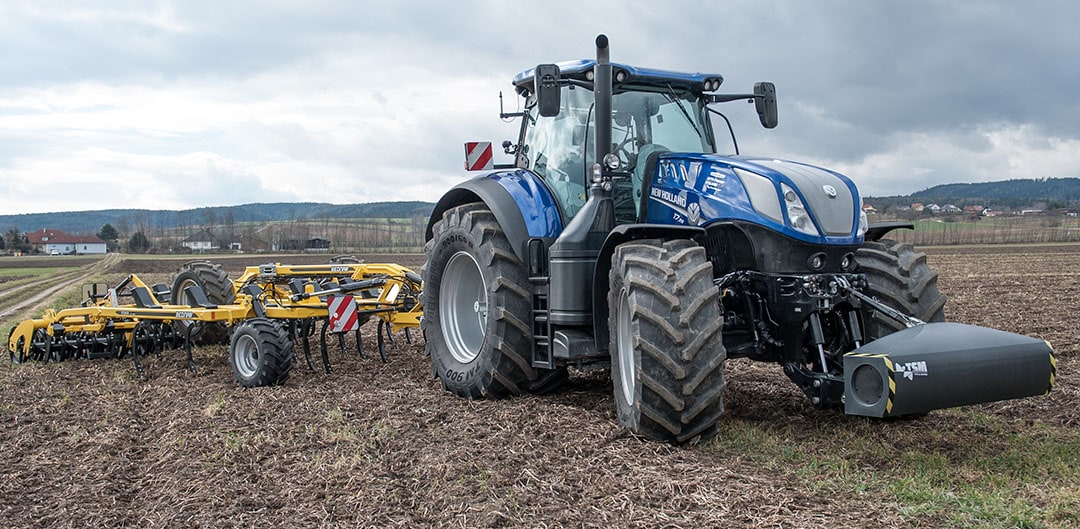Variable depth cultivation: updates and new insights

Variable depth tillage comes within reach of an increasing number of implements ánd farmers. Research shows the biggest gain is reduced fuel consumption. But there’s much more to it.
An increasing number of cultivators, (disc) harrows, vertical tillers and even deep rippers is capable of adjusting the working depth and/or the intensity on the go based on varying soil conditions and parameters. A means of working mostly referred to as variable depth cultivation (VDC), variable depth tillage (VDT) or variable intensity tillage (VIT).
It allows for tuning for example coulter disc gang angles and machinery working depths to varying soil properties and types, slopes ánd to compacted areas. With the help of soil scanners or sensors, the tillage intensity can be varied automatically or if needed kept constant.
Keeping working depths constant
Topcon for instance, now also fits its well-known Norac ultrasonic boom height sensors to cultivators and disc harrows to maintain a constant working depth irrespective of uneven surfaces and bumpy fields. Two or four such sensors suffice depending on the length of the machine. Unnecessary deep working is prevented and that helps save fuel. Topcon’s technology doesn’t allow for working with prescription maps (yet).
Keeping working depths constant and vary them is possible with both Case IH AFS Soil Command and John Deere TruSet Active. The latter was introduced late last year and uses an ultrasonic sensor to measure the frame height and tillage depth of certain cultivators, disc harrows, mulch finishers and vertical tillers. It also adapts for mainframe wheels sinking into softer soils and building up mud. TruSet Active is compatible with other tractor brands as well.
Text continues below picture

Specialists rule
Although the number of VDC capable implements and machines is on the rise, a few specialist machinery manufacturers in Australia and the USA have picked it up early. Such as Gates Manufacturing in North Dakota with their Dynamic Adapt Soil Conditioning system. It uses photo-based sensors to monitor and adapt the gang angle of Gates’ disc harrows on the go to the desired soil to crop residue ratio. Gang angles adapt in steps of 0.5 degrees and between 0 and 15 degrees.
Summers Manufacturing, also from North Dakota, enables gang angles between 0 and 19 degrees for the same reasons. Their iControl offers memory positions for the various gang angle. Canadian research has shown that fuel consumption decreases by 17 percent after adjusting the gang angle by 6 degrees.
Australian manufacturer Davimac Group in New South Wales manufactures the Agrowplow AP82 deep ripper with a hydraulic level adjust lift. This enables depth and angle control from the tractor allowing operators to adjust to changing soil conditions.
Scan and act in one pass
Adjusting tillage depth to changing soil conditions and parameters requires site specific insights in those conditions and parameters. Soil maps, satellite data but also tractor fuel consumption or traction records and soil sensors can account for that. Such as the CNH/AgXtend SoilXplorer, Dualem 21S, Geoprospectors Topsoil Mapper, SoilOptix sensor and Veris MSP3/iScan. The SoilXplorer technologically equals the Topsoil Mapper and both are claimed to be the only sensors that can scan the soil and adjust tillage depths real-time on-the-go in one single pass. The Topsoil Mapper currently retails at € 28,000 and requires Geoprospectors’ Automatic Tillage Control (€ 7,500) to do so.
The sensor is actively used in Austria, Brazil, Germany, Romania, USA and other countries (see box ‘Gathering experience with variable depth tillage’). Finding Isobus certified equipment that can be controlled by the sensor, is made easy with the AEF Isobus database and its app (see box ‘Your gateway to Isobus certified machinery’).
Text continues below picture

Lemken iQblue connect
One of the certified tools listed in the database is Lemken’s iQblue connect. iQblue connect turns basically any existing plough or cultivator into a smart one capable of controlling certain hydraulics automatically. To do so, an Isobus TIM-certified tractor is required. TIM means Tractor Implement Management and enables implements and machines to control specific tractor functionalities such as the hitch, the oil flow and pressure, driving speed and start-stop. Not too many tractors are certified as such yet, but if you have one, iQblue connect lets you change a plough’s working width and a cultivator’s tillage depth automatically. How that affects fuel consumption is described in the box ‘Fuel reduce as main research result’.



